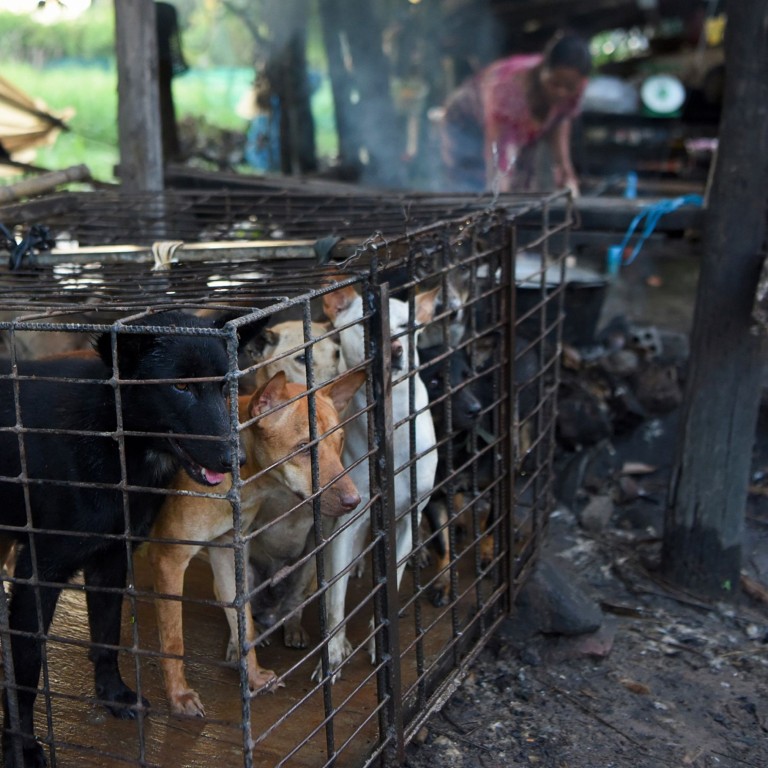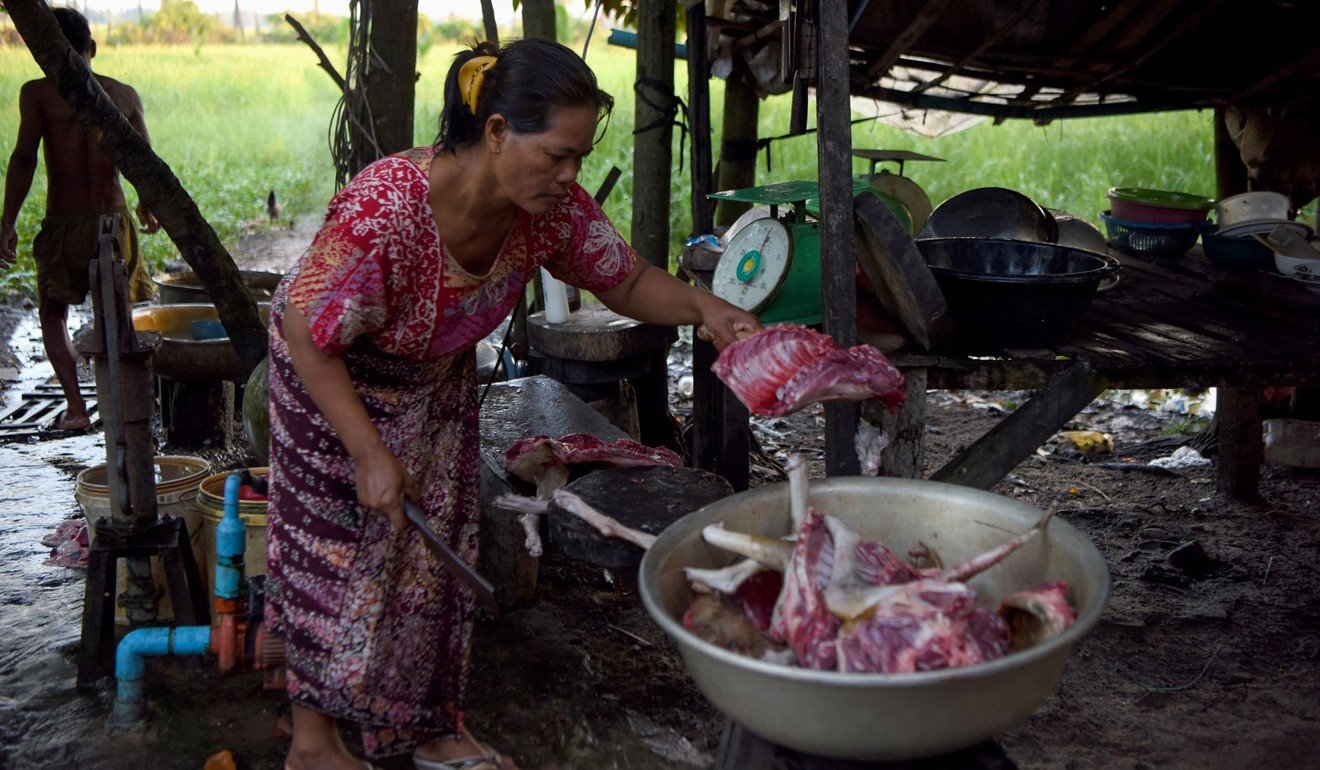
Inside Cambodia’s brutal dog meat trade, which claims millions of animals each year
- Researchers say the dog meat trade is a public health crisis because it carries potentially infected animals all over the country
- Slaughterhouses in developing countries put some distance between workers and animals. But the Cambodian dog trade is hands on
Cambodian dog meat traders drown, strangle and stab thousands of canines a day in a shadowy but sprawling business that traumatises workers and exposes them to deadly health risks like rabies.
Former restaurant owner Khieu Chan bursts into tears when describing a job that still haunts him as he goes to sleep: killing up to six dogs a day, slicing their throats.
“‘Please forgive me. If I don’t kill you, I can’t feed my family’,” the 41-year-old would tell the dogs awaiting their fate in a cage.
South Korea hopes to cull its dog meat trade, but the tradition will linger for a while yet
Animal welfare activists say consumption has declined as the region’s middle class has grown – more people own pets, and there’s greater stigma associated with eating dog. But the brutal trade has flown under the radar in Cambodia where new research shows a thriving business involving roving dog catchers, unlicensed slaughterhouses and many restaurants in cities selling so-called “special meat”.
An estimated 2-3 million dogs are slaughtered annually in Cambodia, according to the NGO Four Paws, which identified more than 100 dog meats restaurants in the capital Phnom Penh and about 20 in the temple town of Siem Reap.

“It has this massive trade,” says Katherine Polak, a Thailand-based veterinarian who works with the NGO, which recently presented findings to the government. Officials were “shocked” by the magnitude, she says.
Motorbike riders criss-cross northern Cambodia trading pots, pans and cookware for unwanted dogs, loading them into a heavy rectangular cage on the back seat and making deliveries to middlemen. Live specimens fetch US$2 to US$3 per kilo, incentivising suppliers to collect as many as possible.
Asia’s booming dog meat business and the activists seeking to end a cruel trade
Researchers say the dog meat trade is a public health crisis because it carries potentially infected animals all over the country.
Cambodia has one of the highest incidence rates of rabies in the world and most cases are from dog bites. The trade also undermines local canine immunisation efforts by removing and killing vaccinated dogs.

Unsanitary slaughterhouses have no safety regulations as they aren’t overseen by the government, and workers wear no protective gear.
“I got bitten by a dog but I did not get vaccinated because when I returned it was late at night,” Pring That says from his village in Siem Reap as he cooks dog meat stew with fermented fish paste. Instead, the 33-year-old cleaned the wound with soap and lemon.
Yulin residents defend China’s dog meat festival amid outcry
Industrial-scale slaughterhouses in developing countries put some distance between workers and animals. But the Cambodian dog trade is hands on.
After receiving delivery, shirtless men poke dogs with sticks into holding cages. They are then hung, strangled with rope, clubbed over the head or drowned in a pit filled with fetid water.

Just after sunrise in a village in Siem Reap, one worker pulls a dog out of a cage and hangs it on the branch of a tree near drying laundry. After gasping for breath for several minutes, it stops moving. It is then placed in boiling water to remove fur and chopped into parts.
“On a good day, I kill 10 dogs or 12 dogs,” says former soldier Hun Hoy. “I also feel pity for them, but I have to strangle them.”
By putting them in the cage and drowning them in a pit, we don’t have to hear their cries
Suppliers can earn from US$750 to US$1,000 in a country where wages in garment factories are under US$200. Productivity is crucial.
“It’s faster to hit them,” explains Dara, 30, a collector, trader and butcher. “I know it’s a sin.”
Drowning is the preferred method of slaughter a few hours away in Kampong Cham and Kandal provinces.

“By putting them in the cage and drowning them in a pit, we don’t have to hear their cries,” one woman says.
Meat and parts are sold onto restaurants, where they are a popular with day labourers as a barbecued snack or a US$1.25 soup.
The psychological trauma to bring cheap meat to the table is immense and those who find a better job take it.
Next to his dog cage in Takeo, Khieu Chan recalls meeting Four Paws during their investigation of the trade. In an unconventional twist, they gave him land for farming in return for closing his restaurant.
One recent afternoon he helped the NGO take the sickly dogs out of the cage under a tree. But before they were removed and sent to Phnom Penh for treatment, he knelt by the bars saying: “Now you have freedom. You are spared from death.”

.png?itok=arIb17P0)